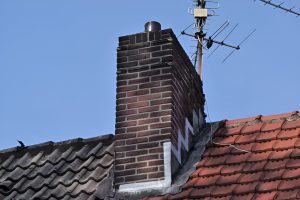Are you baffled by the battle between Duct Armor and Aeroseal? You’re not alone.
It’s a common conundrum for homeowners seeking superior air quality. In this article, you’ll delve into the details of these two titans, comparing efficiency and cost-effectiveness.
We’ll also share real-life experiences to help you decide which is the better bet for your duct sealing needs.
Don’t dawdle; let’s get started on demystifying Duct Armor vs. Aeroseal!
Key Takeaways
- Duct Armor and Aeroseal are both effective methods for sealing and improving ductwork.
- Duct Armor provides durability and resistance against moisture and mold growth.
- Aeroseal offers a non-invasive and cost-effective solution with a longer lifespan.
- Consider factors such as installation costs, maintenance requirements, and individual needs when choosing between the two methods.
Understanding the Basics of Duct Armor
You’ve got to understand the basics of Duct Armor before deciding if it’s the right choice for you. Duct Armor installation involves applying a patented coating directly onto your ductwork. This coat seals and protects from further damage, offering longevity to your system. The process starts by cleaning the ducts thoroughly to remove any debris or contaminants. Then, the unique mixture is applied, which dries and hardens over time, creating an armor-like layer. Duct Armor’s longevity stands out as a significant benefit. Once applied, this durable shield can last years without showing signs of wear or tear. But remember, it’s effectiveness hinges on correct installation – done best by certified professionals. Knowing you’re getting long-lasting protection that stands up to time and use offers peace of mind.
A Comprehensive Look at Aeroseal
Let’s dive deep into the details and benefits of Aeroseal to see if it’s right for your needs. Understanding Aeroseal’s installation process is key. It starts with sealing off your ducts and injecting a fog of adhesive particles that sticks to and seals leaks. This non-invasive method doesn’t require tearing down walls or ceilings, making it less disruptive. Now, let’s talk about Aeroseal’s impact on energy efficiency. By effectively sealing leaks, you’re not losing conditioned air through holes in your ductwork. That means your HVAC system doesn’t have to work as hard to heat or cool your home, leading to significant energy savings. Overall, Aeroseal could be a cost-effective solution for improving comfort and reducing energy costs in your home.
Comparing the Efficiency of Duct Armor and Aeroseal
Comparing two popular solutions, it’s critical for you to note the differences in efficiency between these methods. The installation process of Duct Armor involves applying a liquid solution inside the ducts, which solidifies and seals leaks. On the other hand, Aeroseal uses aerosol particles to seal leaks from within. In terms of performance longevity, Aeroseal tends to have a longer lifespan compared to Duct Armor due to its adhesive properties. However, Duct Armor has shown commendable resistance against moisture and mold growth. In essence, both methods have their unique strengths depending on specific needs and conditions. It’s crucial for you to evaluate these factors carefully before making your final decision regarding which method is most suitable for you.
Evaluating the Cost-Effectiveness: Duct Armor Vs. Aeroseal
In evaluating the cost-effectiveness of these two methods, it’s essential to consider not only the upfront costs but also the long-term energy savings and potential maintenance expenses. Here are some key points to bear in mind:
- Installation Process:
- Duct Armor could be more labor-intensive which may increase initial costs.
- Aeroseal’s process is less invasive, potentially reducing installation fees.
- Maintenance Requirements:
- Duct Armor might demand periodic reapplication, adding to overall expenditure.
- Conversely, Aeroseal could require less frequent maintenance checks, thus saving money over time. When deciding between Duct Armor and Aeroseal, you need to balance these factors against your budget and specific needs. Both options have their merits; your choice depends on what works best for your situation.
Real-Life Applications and User Experiences of Duct Armor and Aeroseal
You’re probably curious about how these two methods hold up in real-world scenarios and what other users have to say about their experiences. When it comes to the installation process, Duct Armor’s application requires a more hands-on approach, often needing professional installers due to its liquid-based solution that needs curing time. In contrast, Aeroseal’s process is relatively straightforward and can be performed quickly by professionals using aerosol particles. Product longevity also plays a crucial role in user experience. Most users find both products durable; however, some users have reported that Duct Armor tends to last longer due to its resistant properties. On the other hand, Aeroseal offers an impressive warranty period, which provides reassurance for many customers. These differences make each product appealing depending on individual requirements and preferences.
Conclusion
In conclusion, choosing between Duct Armor and Aeroseal depends on your unique needs. For instance, if cost-effectiveness is your priority, you might lean towards Aeroseal. But remember Jane from California, who needed a long-lasting solution for her ancient HVAC system? She opted for Duct Armor and saw fantastic results. So, weigh the pros and cons carefully before making your decision. It’s all about finding what works best for your situation!






